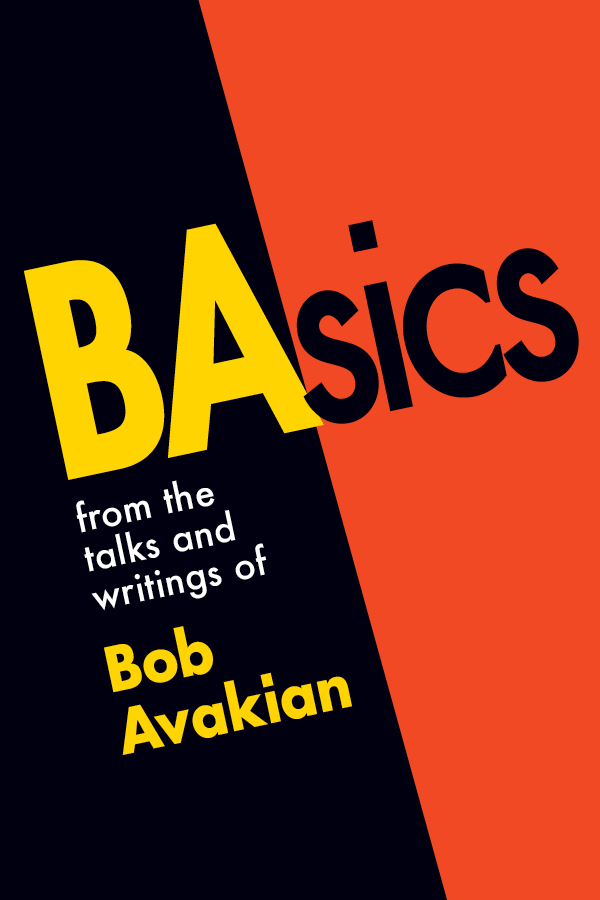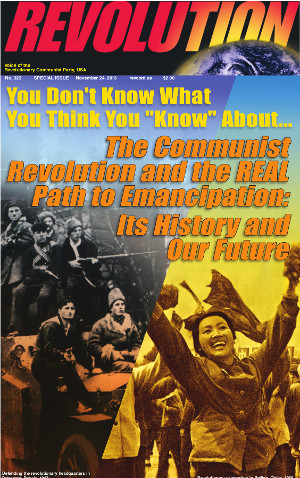Case #82: Murderous Neglect and Repression After Hurricane Katrina
August 30, 2016 | Revolution Newspaper | revcom.us
Bob Avakian recently wrote that one of three things that has “to happen in order for there to be real and lasting change for the better: People have to fully confront the actual history of this country and its role in the world up to today, and the terrible consequences of this.” (See “3 Things that have to happen in order for there to be real and lasting change for the better.”)
In that light, and in that spirit, “American Crime” is a regular feature of revcom.us. Each installment will focus on one of the 100 worst crimes committed by the U.S. rulers—out of countless bloody crimes they have carried out against people around the world, from the founding of the U.S. to the present day.
THE CRIME:
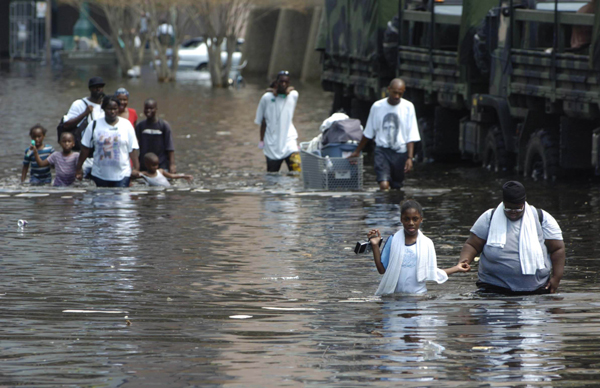
The true story of Katrina reveals the utterly worthless nature of this system and why and how things do not have to be like this. Above: People in New Orleans who were abandoned by the system carry their possessions through the flooded streets, August 31, 2005. (AP photo)
On August 29, 2005, Hurricane Katrina hit the city of New Orleans, bringing terrible destruction. But the human suffering and death that followed was not, overwhelmingly, a result of the storm itself. It was a crime of this system.
Days before Katrina hit, meteorologists predicted a serious hurricane, saying the city, about half of which is between one and seven feet below sea level, should be evacuated. But the government did nothing to evacuate the city, stranding close to 100,000 people—people of all walks of life, but especially poor and Black people who did not have any means to leave.
The U.S. Army Corps of Engineers failed to ensure that the city’s levees could adequately hold in such a storm, and when they collapsed, floodwaters rose 20 feet in parts of New Orleans, and 80 percent of the city went under water. Neighborhoods below sea level, many of them poor and Black areas, were the most vulnerable to flooding. Nearly 2,000 died in the days after Hurricane Katrina hit, about 1,500 of them in New Orleans.
There was no help for tens of thousands of desperate people stuck for days on the roofs of houses in 100-degree heat with nothing to eat or drink. Bodies of poor and Black people were left for days, weeks—floating in water, on sidewalks, underneath debris, decomposing, mangled. The system attacked those distributing desperately needed food and water, calling them “looters.” 30,000 National Guard soldiers occupied the city to “restore law and order” and repress people.
There are several accounts from police themselves who say they were told to “shoot looters,” “take back the city,” and “do what you have to do.” The police shot at least 11 people in the days after Katrina. On September 1, some people tried to get to safety by crossing a bridge into Jefferson Parish and police lined up with shotguns and wouldn’t let them cross.
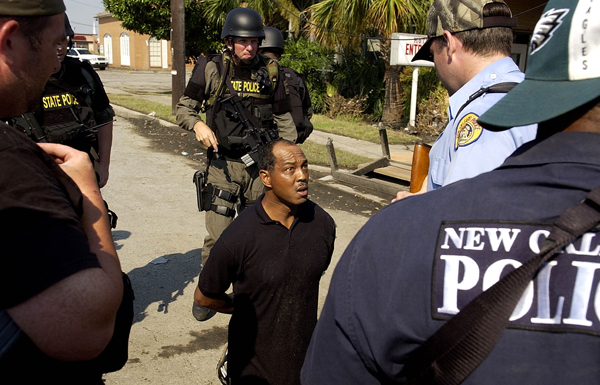
Lance Madison is arrested by Louisiana State Police and New Orleans Police Department SWAT teams Sept. 4, 2005. His brother, Ronald Madison, along with James Brissette, was gunned down by cops that day as they attempted to walk across the Danziger Bridge in New Orleans. (AP photo)
On September 4, the cops fired at a group of people trying to walk across the Danziger Bridge, which spans the Industrial Canal in New Orleans. 40-year-old Ronald Madison, who was mentally disabled, had a hole torn through his spine and chest, shot in the back with a shotgun by a cop, who then proceeded to kick him mercilessly. Seventeen-year-old James Brissette was also killed and four others were severely wounded.
Seven thousand prisoners, mostly poor and Black, were left locked in their cells as water flooded the prison and guards left. For days, prisoners were trapped with no food, water, or needed medication and had to resort to drinking contaminated floodwater containing raw sewage. Prisoners said deputy snipers shot at anyone who tried to get out of the flooded, suffocating buildings. When deputies came back into the prison building, they didn’t come with food, water, or any other kind of help. Instead, they came with riot gear, shotguns, mace, batons, tasers, and brutality, and prisoners were evacuated under inhuman and brutal conditions.

 Over 25,000 people were subjected to slave ship conditions at the Superdome and Convention Center. People were herded in and locked up to wait to be evacuated, treated -- not like victims who had just experienced a horrible natural disaster, with many not even knowing the fate of other family members—but like prisoners and animals, subjected to the most inhumane, unsanitary conditions, having to face National Guard troops with assault rifles, ready to shoot.
Over 25,000 people were subjected to slave ship conditions at the Superdome and Convention Center. People were herded in and locked up to wait to be evacuated, treated -- not like victims who had just experienced a horrible natural disaster, with many not even knowing the fate of other family members—but like prisoners and animals, subjected to the most inhumane, unsanitary conditions, having to face National Guard troops with assault rifles, ready to shoot.
Above: a SWAT team drives past flood victims waiting at the Convention Center in New Orleans, Thursday, Sept. 1, 2005. Right: people herded into a virtual concentration camp at the Superdome. (AP photos)
Over 25,000 people were subjected to slave-ship conditions at the Superdome and Convention Center. People were herded in and locked up to wait to be evacuated, treated not like victims—who had just experienced a horrible natural disaster, with many not even knowing the fate of other family members—but like prisoners and animals, subjected to the most inhumane, unsanitary conditions, having to face National Guard troops with assault rifles, ready to shoot. People suffered from dehydration and were surrounded by disease-ridden water.
When the government finally evacuated people from the Superdome on September 1, they herded tens of thousands onto buses with one-way tickets to 44 different states. People didn’t know where they were going. Families were separated, children ripped away from their parents. People were treated like criminals or potential criminals. Background checks were done when people checked into shelters. Some were jailed on old warrants; some immigrants were deported. One resident recalled: “With the evacuation scattering my family all over the United States, I felt like it was an ancient memory, as if we had been up on an auction block.” This was not the only person who talked about how this echoed families being separated during slavery.
THE CRIMINALS:
President George W. Bush was on a month-long vacation when Katrina hit and stayed on vacation for two full days as the government left people utterly at the mercy of the unfolding disaster. Then, rather than visit New Orleans, he did a flyover on his way back to Washington DC, viewing the carnage from Air Force One—up where he couldn't smell the stench of rotting bodies and see the misery of the people. White House officials who blatantly ignored the suffering. In the days after the storm hit: Secretary of State Condoleezza Rice took a vacation and went shopping for designer shoes; Vice President Dick Cheney went fly fishing.
Louisiana Governor Kathleen Blanco, who when she sent in National Guard troops, said: “They have M-16s and they’re locked and loaded. These troops know how to shoot and kill, and they are more than willing to do so, and I expect they will.”
FEMA blocked efforts by regular people and even businesses to provide relief. They blocked a hotel’s plan to hire 10 buses to take about 500 people to higher ground; turned away a Walmart truck loaded with water; and wouldn’t allow into the area other non-governmental and volunteer groups who wanted to bring in things like food and water. When Bush did finally go to New Orleans five days after the storm hit, he congratulated the head of FEMA, Michael D. Brown, saying, “Brownie, you’re doing a heck of a job.”
The National Guard and the New Orleans Police: Before the storm even hit, Governor Blanco gave authorities power to suspend civil liberties. In the media, people desperately trying to survive were demonized as “dangerous armed gangs of looters.” National Guard soldiers and cops were given a green light to heartlessly and brutally attack people trying to survive. The commander of Louisiana National Guard’s Joint Task Force said: “This place is going to look like Little Somalia”—referring to the 1993 U.S. invasion of that impoverished and plundered African country where U.S. troops terrorized the population with heavily armed raids until they were driven out.
THE ALIBI: The U.S Army Corps of Engineers tried to say the levees failed because Katrina was just too big. But they later conceded the levees failed because of flawed engineering and botched tests that should have determined soil stability below the levees. The Corps and local levee boards that maintain flood barriers had not wanted to spend the necessary money to maintain/improve the levees.
Department of Homeland Security Secretary Michael Chertoff said he and Bush “were deeply and personally engaged” before and after the hurricane hit and laid much of the blame on the governor of Louisiana and FEMA’s head, Michael D. Brown. Chertoff said they got conflicting information about what was happening. In fact, the governor declared a state of emergency three days before Katrina hit, and then reports, videos, and photos of people’s desperate situation were all over the news.
FEMA deliberately slowed down relief efforts, saying it wanted to coordinate assistance—it urged fire and emergency services departments not to respond to counties and states affected by Katrina without being requested and dispatched by state and local authorities under mutual aid agreements.
Brutal repression, including cops shooting people, was justified by saying “law and order” had to be restored and that people were looting.
THE MOTIVE: In the context of an enormous natural disaster, which the system had refused to prepare for, a combination of a long history of racism built into every level of economic, political, and social aspects of society; and conscious policy on the part of federal, state, and local governments—led to what amounted to ethnic cleansing and crimes against the poor. This connected up to a whole legacy of slavery and the oppression of Black people—going back to when New Orleans was a major center for the selling of slaves, and carried out by a system that has always treated Black people as exploitable, expendable, and undesirable.
Katrina provided the opportunity for government policies that amounted to trying to make the city “less Black” and “less poor.” Efforts to rebuild the devastated, mostly Black sections of the city were stymied and stopped by government policies. Public housing, home to poor and Black people, was bulldozed even when it was sound and could have been made habitable. Louisiana Congressman Richard Baker said, “We finally cleaned up public housing in New Orleans. We couldn’t do it, but God did it.” Today, New Orleans has 100,000 fewer Black people than it did when Katrina hit.
Volunteers Needed... for revcom.us and Revolution
If you like this article, subscribe, donate to and sustain Revolution newspaper.


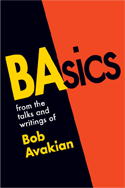 This system and those who rule over it are not capable of carrying out economic development to meet the needs of the people now, while balancing that with the needs of future generations and requirements of safeguarding the environment. They care nothing for the rich diversity of the earth and its species, for the treasures this contains, except when and where they can turn this into profit for themselves....These people are not fit to be the caretakers of the earth.
This system and those who rule over it are not capable of carrying out economic development to meet the needs of the people now, while balancing that with the needs of future generations and requirements of safeguarding the environment. They care nothing for the rich diversity of the earth and its species, for the treasures this contains, except when and where they can turn this into profit for themselves....These people are not fit to be the caretakers of the earth.

